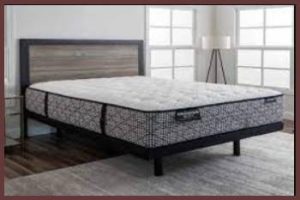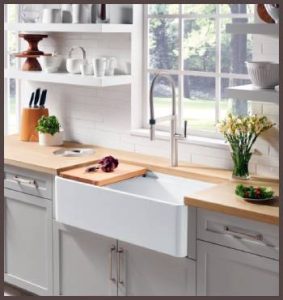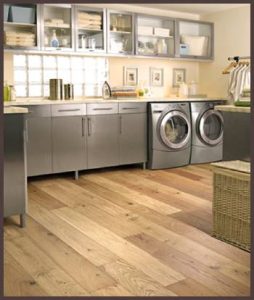Zellige tiles have long been celebrated for their unique, handcrafted beauty, originating from the Moroccan city of Fez. Their vibrant colors and charming imperfections lend character to any space, but they’re not for everyone.
Perhaps you’re looking for a more affordable option or something with a different aesthetic. In this article, we’ll explore some Zellige tile alternatives and weigh the pros and cons of each.
Ceramic Tiles: A Classic Choice
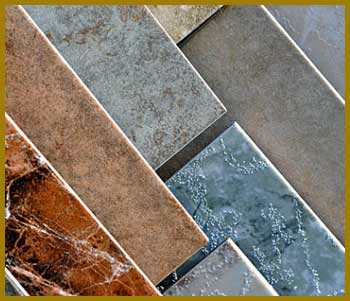
Ceramic tiles have been a popular choice for centuries, offering versatility, affordability, and durability.
Pros
- Budget-friendly: Ceramic tiles are generally less expensive than Zellige, making them a great option for those on a tighter budget.
- Variety of styles: With a wide range of colors, patterns, and sizes, ceramic tiles can easily fit into any design scheme.
- Durability: Ceramic tiles are resistant to water and stains, making them a practical option for high-traffic areas or damp environments.
Cons
- Less character: The uniformity of ceramic tiles can lack the charm and personality of Zellige’s handmade, imperfect aesthetic.
- Grout maintenance: Ceramic tiles require regular grout cleaning to prevent staining and mold growth.
Cement Tiles: Bold and Colorful
Cement tiles, also known as encaustic tiles, are known for their bold patterns and rich colors.
Pros
- Customizable designs: With a wide array of patterns and colors, cement tiles offer endless design possibilities.
- Long-lasting: Cement tiles are known for their durability and can last for decades when properly maintained.
- Eco-friendly: Made from natural materials, cement tiles are an environmentally friendly choice.
Cons
- Higher cost: Cement tiles tend to be more expensive than ceramic tiles, although still generally more affordable than Zellige.
- Maintenance requirements: Cement tiles need to be sealed periodically to protect against stains and damage.
Porcelain Tiles: Sophisticated and Durable
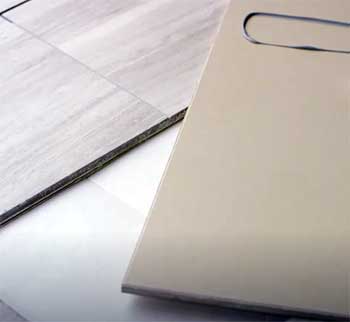
Porcelain tiles are a type of ceramic tile known for their density, durability, and low water absorption rate.
Pros
- Durability: Porcelain tiles are highly resistant to water, stains, and wear, making them an excellent choice for high-traffic areas.
- Wide variety: Porcelain tiles come in a vast array of colors, patterns, and textures, allowing them to mimic other materials such as wood, marble, or even Zellige.
- Low maintenance: With their non-porous surface, porcelain tiles are easy to clean and require minimal upkeep.
Cons
- Higher cost: Porcelain tiles can be more expensive than standard ceramic tiles, though still typically more affordable than Zellige.
- Installation complexity: Due to their density, porcelain tiles can be more challenging to cut and install than other tile options.
Glass Tiles: Sleek and Modern
Glass tiles offer a contemporary look that can add a touch of elegance to any space.
Pros
- Reflective quality: Glass tiles reflect light, creating a bright and spacious atmosphere.
- Easy to clean: The non-porous surface of glass tiles makes them easy to clean and resistant to stains.
- Eco-friendly: Many glass tiles are made from recycled materials, making them an environmentally conscious choice.
Cons
- Cost: Glass tiles can be more expensive than ceramic and porcelain options.
- Fragility: Glass tiles are more prone to chipping and cracking than other tile materials.
Also Read: Should You Get Utile MAAX Tiles?
Frequently Asked Questions (FAQ)
Yes, zellige tiles tend to be more expensive than other tile options due to the labor-intensive, handmade process and the cost of materials. However, the unique character and charm of zellige tiles may be worth the investment for some homeowners.
Zellige and Bejmat are both types of Moroccan tiles, but they differ in shape and usage. Zellige tiles are typically square or rectangular and can be used to create intricate mosaic patterns. Bejmat tiles are elongated and have a brick-like shape, often used for creating more linear and geometric patterns. Both types of tiles are handmade, featuring the characteristic imperfections and variations that make them unique.
If you’re looking for an alternative to tiles in your kitchen, consider materials such as:
Stainless steel: Durable and easy to clean, stainless steel is a popular choice for modern and industrial-style kitchens.
Stone slab: Natural stone slabs, like granite or quartz, offer a seamless, high-end look that’s both durable and heat-resistant.
Wood: Though not as durable as tile, wood or wood-like materials, such as laminate or engineered wood, can create a warm, inviting atmosphere.
Wallpaper: With a wide range of patterns and colors, wallpaper can add a unique touch to your kitchen. Choose a washable, moisture-resistant option for easy maintenance.
Yes, zellige tiles should have grout lines, although they are often thinner than those used with other types of tiles. The grout lines help to accommodate the variations in size and shape that are characteristic of handmade tiles. Additionally, grout lines can enhance the overall aesthetic of a zellige installation, highlighting the individuality of each tile.
Zellige tiles can be an excellent choice for a backsplash, as they add a unique, handcrafted touch to your kitchen or bathroom. The vibrant colors and imperfections of zellige tiles can create a striking focal point, while the tiles’ resistance to water and stains makes them a practical option for areas exposed to moisture. However, the higher cost and potential difficulty in sourcing and installation may be factors to consider when deciding if zellige is the right choice for your backsplash project.
Final Thoughts
In conclusion, there are numerous Zellige tile alternatives available, each with its own set of pros and cons. Consider factors such as cost, maintenance, durability, and aesthetics when choosing the best tile option for your project.
Whether you prefer the classic appeal of ceramic tiles, the bold patterns of cement tiles, the sophistication of porcelain tiles, or the modern look of glass tiles, there’s a tile option to suit every style and budget.

